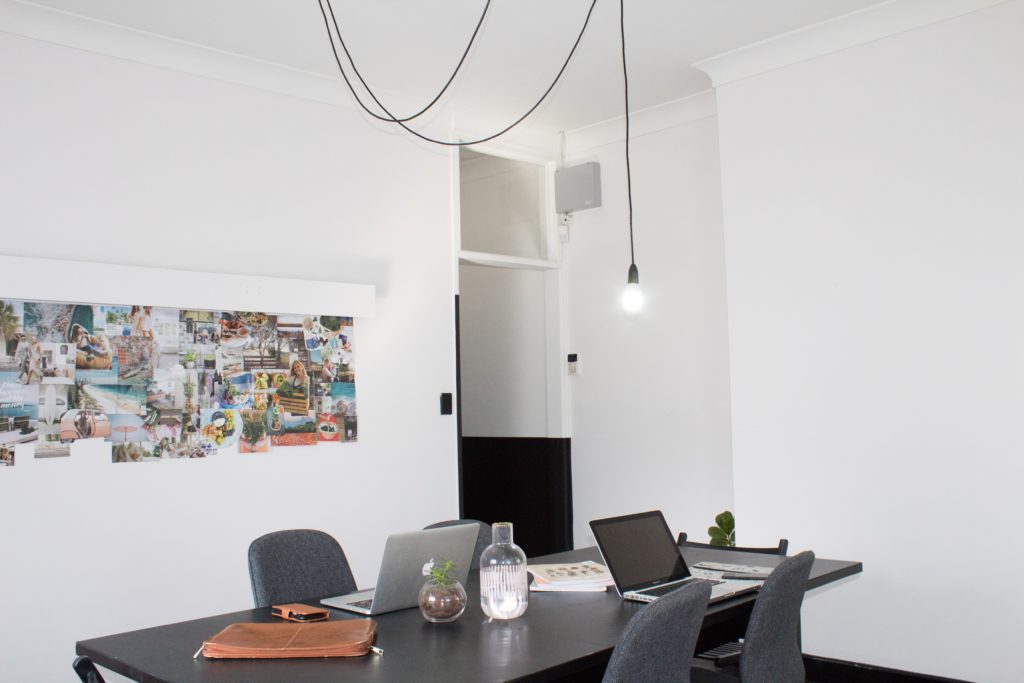This article was updated in August 2022
As any project manager will tell you, a good kick-off meeting is one that will bring your project team together, giving them a shared understanding of what the project is all about and how you will be going about the work involved. What they will also, probably, tell you is that at some point in their career everyone has attended at least one kick-off meeting that has been little more than a waste of time; time that you can never get back and that you could have used so much more productively.
So, if you are about to hold a kick-off meeting, then you might want to know exactly what it is that can make them go wrong and more importantly what you can do to ensure that your meeting is not only productive but also a great use of everybody’s time.
No matter whether you are working with other members of the same company, or an external client, a kick-off meeting that is a success will help to get your project off on precisely the right foot. Before you call that all-important meeting, have a look at our list of 10 critical attributes and how you can get them right to ensure that your meeting is as productive as can be.
Table of Contents
So, what is a kick-off meeting?
1.Run a kick-off meeting internally
2.Chose the meeting venue if possible
3. Assign team roles using the DACI framework
5.Establish expectations before you start
7. Split your plan into three sections.
8. Make sure everyone is on the same page with the vision of the project
9. What is the client’s view on managing risk?10. Consider the little things.
So, what is a kick-off meeting?
A kick-off meeting could be thought of as similar to a first date. A first date might involve getting to know the other person, their dreams and aspirations and their likes and dislikes. A kick-off meeting is similarly the first time that all of the stakeholders involved in a project come together in order to discuss the strategies of the project and any other relevant information.
This might perhaps take the form of a meeting between top-level management, the project manager and of course, the client. It could, however, simply be a meeting between the project manager and their team.
The list of who should attend this type of meeting will generally depend on the size of the project that is being undertaken. However, whatever type of project is involved this is a classic tool used by project managers to ensure that everyone involved in a project gets together.
This is important in terms of discussing strategy, gaining any necessary authorisations and just in general for getting a good idea of what the project is all about and what type of work might be involved. A kick-off meeting should be considered the formal start of your project.
1.Run a kick-off meeting internally
When you start a new project, your team may be enthusiastic, full of energy and ideas may be flowing freely. Everyone may want to wow the client with their ideas for the project. However, rushing in is never the best idea. A kick-off meeting is not meant to be something casual. It might appear that way, but the best kick-offs have tight time limits and agendas. If you don’t prepare properly, or even have a practice run, then you may find yourself facing some outcomes that are less than favourable.
Having a practice kick-off meeting internally can be a great solution to this. It gives you an opportunity to tell your team all about the client, the project and your thoughts. This will give everyone the information that they need to know without needing to hold lots of individual meetings, which will take up unnecessary extra time. It will also make sure that any new members of the team know how a kick-off runs.
- Formulate an agenda that is similar to what you will use for the real meeting
- Look at the client’s vision and background and how you will approach the project
- Assign roles to your team members
- See how long the meeting takes and try to keep it to the time of the actual meeting.

2.Chose the meeting venue if possible
For many people now there simply is no choice of venue for a meeting. With so many people working from home during the COVID-19 lockdown virtual meetings are becoming a way of life; but fundamentally the ingredients of a good meeting remain the same….
One of the most important aspects of venue (real or virtual) is the client’s experience so things to consider include:
- Set up the meeting room (real or virtual) in
advance to ensure that things work, and you have everything you need - Ensure the client is greeted on arrival
- Make introductions if not everyone knows each
other - If you have a large team use name cards in
face-to-face meetings or, in virtual meetings, ensure everyone enters their full
name on joining the meeting
Remember that first impressions really do count so make sure the impression you make is the right one.
3. Assign team roles using the DACI framework
Assigning roles within a team should be one of the most important things you do as part of any kick-off meeting agenda. The best way to do this is with the DACI framework. This involves separating team roles into four categories, as follows:
Driver
The individual with the responsibility for driving the project forward. They need to liaise with stakeholders, collect information, get decisions and work with the rest of the team. This person is usually the project manager.
Approver
A group, or person, who makes all the key decisions. This role is usually taken by the project sponsor and will also need them to sign off on any deliverables.
Contributor
These are the people who contribute with input on the project but have no say when it comes to the final decision. They can offer expert advice to the driver.
Informed person/s
Those people who need to be informed on how the project is going. They may have some influence but don’t have a say in final decisions. This group is usually made up of stakeholders and senior execs.
The use of DACI will explain the breakdown of responsibility clearly to everyone involved.

4.Create an agenda
During your kick-off meeting, you may not have plenty of time, but you will have a great deal to achieve. A clear agenda will ensure that you use your time wisely to get as much done as possible.
Before you write your agenda think about the following:
- How long will the meeting be?
- Who will be attending, and what are their names?
- Where will the meeting be held?
- Do you need any special equipment for the
meeting?
Once you have this information to hand, you will be able to
work out your agenda. You should consider allowing time for introductions,
explaining what your approach is and of course mapping out how you will tackle
the project etc.
5.Establish expectations before you start
What you should do with your kick-off is make introductions, work through any issues and ensure everyone is thinking along the same lines.
What you need to do is establish the expectations for the project. This will set a tone for the work to follow.
Your client will have preconceived ideas about the project, your team, everything. This might be from promises you have already made or previous experience. It is your role to manage expectations by explaining how you will be working on the project, handle communication and anything else to do with the project.
A lot of this will come across in how you act during the kick-off. You need to be confident and appear to be in control. This will make the client confident for a positive outcome for the project.
You could explain:
- What communication methods and tools you use
- Your methodology for project management
- What you need from the client and when
- Potential delivery schedules, response times, and communication availability
- How change requests might be dealt with
Above all, you should be honest and upfront to ensure that your client is not unhappy later.
6. Prepare thoroughly
Being prepared is the single most important element in running a successful kick-off meeting. Ensure you understand the project and can answer any questions.
Make sure you know:
- The background of the client: company information, products, project sponsors etc.
- Who is on the client’s team, names and positions
- The scope of the project, any vision the client might have and who they are targeting with the project
- Major competitors of the client and their products
- Your team and their individual roles
- Your own approach, especially in terms of communication and the management process
You could ask members of your team to help with some of this and go over it at your internal kick-off meeting to ensure everyone has the information they need.

7. Split your plan into three sections
Divide the planning and preparation for your kick-off meeting into three separate sections:
Before the meeting:
This is when you learn what, you can about the project
You should:
- Ensure all members of the team understand their
roles, the demands of the project, and the vision the client has - Prepare any documentation you may need
- Set the agenda for the meeting and prepare the
meeting space - Plan how you can make a positive first
impression
During the meeting:
It is your job to ensure the meeting goes as you have planned.
You should:
- Break the ice and build a relationship with the
client - Make sure the meeting follows the agenda
- Ask relevant questions to help communication
- Assign team roles, set expectations, and
establish the tone for the rest of the project
After the meeting:
Once the client leaves the meeting, your job isn’t over. You need to collect all the information you have gathered together and close the meeting.
You should:
- Email everyone with minutes or notes from the
meeting - Plan out a list of your next steps
- Speak with the team and compare notes
- Clarify what communication tools you will use
and make a plan for future meetings
8. Make sure everyone is on the same page with the vision of the project
One of the biggest areas where you can find conflict in your project is when there is disagreement regarding the vision of the project. In some cases, the client may see the concept of your project entirely differently to the way you and your team do.
The kick-off meeting offers you the perfect platform to ensure that everyone is working towards the same goals and vision.
These are some of the things that need to be clear to those working on the project:
- Why? – why is the project in existence not only
for the client but also for end-users? - What are the goals for the final product?
- What is the client’s vision for the final
product? - What is the importance of the role of the
project to the client? - What does the client see as the
“must-have” features of the project?
9. What is the client’s view on managing risk?
It is essential to understand how your client deals with project risk and change. You need to know if you have room in your budget for scope changes or if the client will want you to make changes within the initial budget.
While you don’t need to get firm answers for these questions at your kick-off meeting, you need to get a sense of your client’s attitude to risk. If the client seems unconcerned about the idea of increasing the budget, then you will be able to accommodate changes more quickly.
It is better not to ask the question directly but using a more tangential approach, such as asking how scope changes have been dealt with on some of the client’s other projects. This will tell you how the client works.
10. Consider the little things
While it is essential to look at the big things with any project, you mustn’t lose focus on the little things as well. Make sure that the impression you make is a good one, that you get to know the client and their team, and you build up some camaraderie.
While these things may not make or break your kick-off meeting, they will help when it comes to working on the project and will give the client a positive lasting impression of you and your team.